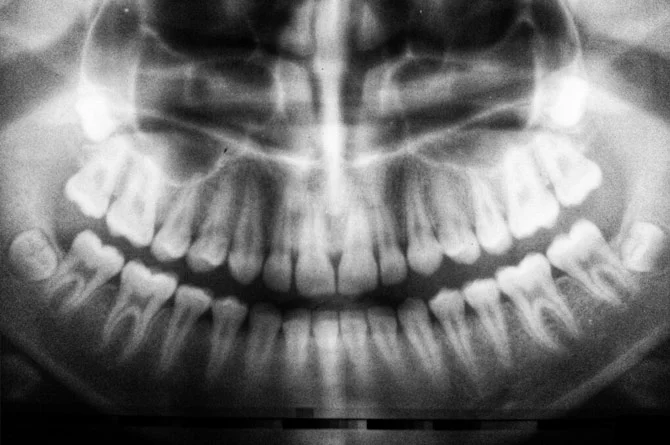When most people come to an orthodontist, they think it is to address the issues they can see. Though an overbite or crooked teeth are orthodontic issues, oral health goes beyond what is visible. Many of the issues that people can see are symptoms—caused by what is happening beneath the surface. By using X-rays and advanced imaging technology, orthodontists assess and treat the root causes of your orthodontic problems to deliver a healthy, aesthetic result.
X-Rays Before Treatment
It is common for people to be referred to an orthodontist by their dentist. Based upon in-person examinations of the patient’s teeth as well as examining the patient’s X-rays, dentists may identify some structural or alignment problems that necessitate orthodontic treatment. Both the referring dentist and your orthodontist will assess your smile, X-rays, and records to make sure that your teeth, gums, jaws, and mouth are healthy enough to begin treatment. You must take care of underlying oral health problems, such as cavities or gum disease, before beginning orthodontics.
Beyond confirming the state of your oral health, X-rays help your orthodontist determine the best treatment plan for you. 3D X-rays, such as a cone beam scan, can be used to look at unerupted teeth in the jaw, jaw joint problems, and soft tissues. This form of advanced imaging also allows our experts to assess individuals who may need both orthodontics and surgery to correct some structural issues. For your treatment, our experts will look not only at the positioning of your teeth above the surface, but also the roots of your teeth, your bite, your jawbones, and more.
What Happens Beneath the Surface During Treatment
Though appliances like braces are attached to your teeth, most of the orthodontic magic happens beneath the surface. While many believe that braces work by pulling your teeth into place, braces actually impact your bones on a cellular level.
Braces or aligners teach your bone’s cells where to grow and where to recede—using controlled, gentle pressure that is completely safe when wielded by a specialist, like Dr. J. Lawrence Hutta or Dr. Tori Hutta. Although you can look at the position of your teeth changing over time, your bones are also changing. Over time, orthodontics can move teeth through bones, influence facial development, and improve the bite.
X-Rays After Treatment
Once your treatment is completed and your braces or aligners come off, your orthodontist will use posttreatment X-rays to evaluate the outcome. Though your braces or aligner journey is finished, you will need to retain your results. We will discuss your unique retention plan and help you ensure a lifelong result.
After treatment, it is always important that you get regular dental X-rays, especially if you have unerupted wisdom teeth. If unchecked, your wisdom teeth could disrupt your bite or aligned smile in the future. After all the work you have put into treatment, you will want to make sure that your smile remains picture-perfect for years to come.
Schedule an Appointment
Achieve your smile goals with expert care from Hutta Orthodontic Specialists. Call 614-885-2000 to schedule an appointment.

